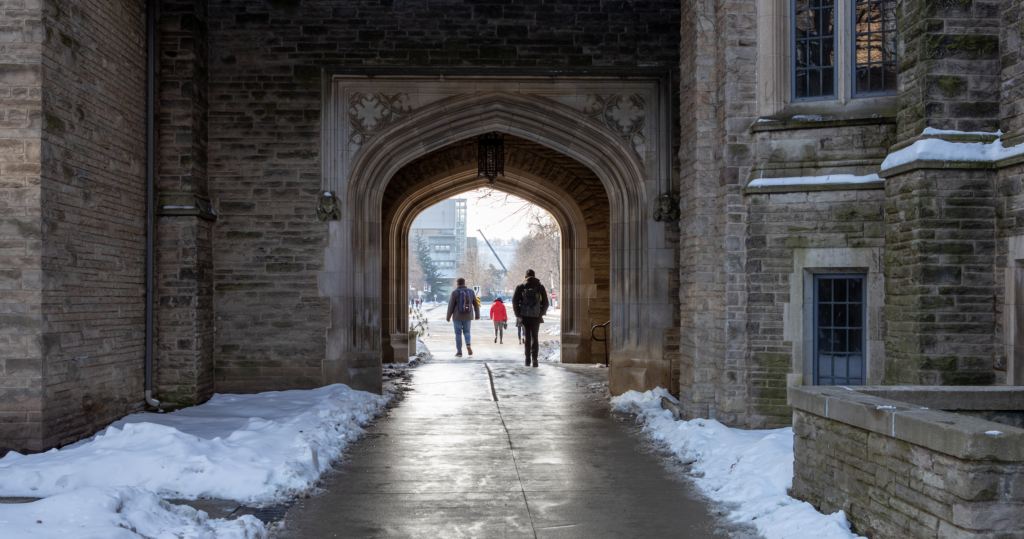McMaster Specific Resources
Accessibility and inclusion McMaster specific resources brings together a number of webpages and Pressbooks that have been developed specifically for McMaster educators in mind. These resources provide advice, guidelines, supports and best practices in creating accessible and inclusive content and learning spaces for diverse learners. It supports those who are just beginning their journey to design with accessibility in mind as well as those who are enhancing their practices.
Accessibility hub – McMaster created and curated resources related to accessibility in one place. It’s an excellent starting place for all things accessibility at McMaster University. (Website, McMaster University)
Forward with flexibility: a teaching and learning resource on accessibility and Inclusion – A comprehensive guidebook to support instructors, teaching assistants, and those in other educational roles in applying accessible education principles across teaching and learning contexts to enhance access for all (Open source, Pressbook, de Bie and Brown, McMaster University)
Accessible digital content training – Contains open-access text, image, and video-based training modules for creating accessible content within digital environments. This includes using content authoring programs such as the Microsoft Office 365 suite and Pressbooks platforms. (Open source, Pressbook, by Blackwood and Brown, 65-pages, McMaster University)
Library accessibility services resources for instructors – Library Accessibility Services works closely with instructors to obtain, create and/or provide alternate format course material for SAS accommodated students. The webpage includes links to resources available to instructors to convert course materials. (Webpage, McMaster University)
Caption options at McMaster – Quick resources that outlines several methods for generating and correcting captions on video and audio files. (Webpage, McMaster University)
Accessible teaching techniques – This module explore models of accessibility, reflects on accessible practices and applies the tenants of Universal Design for Learning to different teaching scenarios. (Module, MacPherson Institute, McMaster University)

Other Accessibility Resources
Other accessibility resources is a section that shares tools, guidelines, frameworks and best practices from a variety of organisations, higher education institutions and research grounded upon the key tenants of anti-oppression, critical disability studies and inclusive pedagogical practices.
Educator’s accessibility toolkit – This website gathers Ontario-focused resources related to higher education and accessibility in one place. (Webpage, Council of Ontario Universities)
Identifying the essential requirements of a course or program – This guide outlines criteria for identifying and evaluating the essential requirements of courses and programs in the context of accommodating students with disabilities. (2-page PDF, Council of Ontario Universities)
SCULPT – A framework for creating accessible media. (Webpage, Worcestershire, UK)
Universal design – best practices for online learning: annotated bibliography – An extensive collection of academic articles and practical resources, with descriptive annotations. (Webpage, University of Guelph)
Designing an accessible online course – This toolkit comprises a series of concise explanations of different aspects of accessibility and course design and includes relevant resources. It covers designing accessible course materials such as PDFs, word-processing documents, slide presentations, and videos, as well as issues in running accessible video meetings. (Toolkit, University of Arkansas)
Online course accessibility checklist – This helpful guide for designing online courses includes tips, techniques, and a checklist for ensuring accessibility in an online class. (PDF, 38 pages, North Carolina Community College)
Blackboard ally – The Blackboard LMS has developed a free tool that performs document conversion; accepts PDF, DOC, DOCX, PPT, PPTX, HTML and outputs to tagged PDF, electronic Braille, audio MP3 and other formats. (Website, Blackboard)
Critical design lab – A multi-disciplinary and multi-institution arts and design collaborative rooted in disability culture, with numerous materials and toolkits related to teaching/ pedagogy and protocols in addition to project descriptions. (Website, by Hamraie et al.)
The science of inclusion: making our lab-based courses more inclusive – This pressbook is meant to provide general guidance on enhancing the accessibility of lab-based courses, with a particular focus on supporting the learning of students with physical disabilities. (Open source, Pressbook, by MacLean et al., University of Ottawa)
